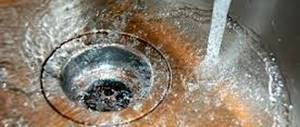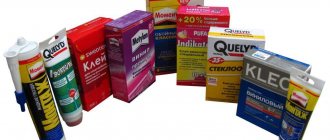How to descale an electric kettle
Any scale in an electric heating device is afraid of acids, so its removal necessarily requires the use of detergents containing acid.
In a modern kitchen you can find electric kettles for every taste:
- glass
- ceramic
- plastic
Let's take a closer look at how quickly and effectively you can clean all these devices.
From glass
Glass teapots look very stylish, but the presence of even a thin layer of scale greatly spoils their appearance.
We offer several effective ways to cope with such pollution.
Vinegar and water
The ideal way to clean glass electric kettles is with a mixture of vinegar and water.
- Pour a mixture of vinegar and water in equal parts into the kettle and boil it, leave this water in the kettle for another 3 hours.
- Then drain and rinse the inside of the appliance with cool water and a soft sponge.
If you are afraid to use regular table vinegar, then you can use apple cider vinegar as an alternative, it is not as aggressive.
Made of plastic
Plastic kettles are most often equipped with a disc heater, which are also susceptible to scale accumulation. In addition, scale accumulates on the walls of the device. Homemade remedies will help you cope with it.
Lemon acid
Citric acid or a quarter of a lemon are perfect for cleaning this type of teapot.
Pour water into the kettle and boil it. Then pour 1 or 2 tbsp into boiling water. l. (depending on the amount of scale) citric acid or add part of the lemon and leave to cool.
Fresh scale will come off on its own, but to remove old growths you will have to repeat the process. After this, be sure to add fresh water and boil and drain again.
Made of ceramics
The ceramic teapot has a very delicate coating that cannot be damaged by acids or mechanical stress.
Therefore, the best way to clean them is pickle from cucumbers or tomatoes, which we often don’t know what to do with.
Cucumber pickle
Make sure that there is nothing unnecessary in the brine: pieces of vegetables or herbs. It is better to pass it through a strainer or gauze.
Pour it into the kettle and boil it, then leave it for another two hours. After which you can remove the scale with a simple sponge and rinse the kettle with cold water.
Apple or potato peels
Light scale deposits can be removed using apple or potato peelings.
Place apple or potato peels in a kettle and fill to the top with water. Boil and leave to cool for 3 hours. Then drain the liquid and wash the kettle with a hard sponge.
How to clean a thermopot from scale
Such a convenient household item inevitably becomes covered with limescale from the inside. Scale in a thermopot leads to the same problems as in an electric kettle:
- excessive noise during operation
- extended heating time
- increased energy consumption
- bad taste of water
- risk of device breakdown due to overheating
An effective recipe for descaling a thermopot requires the use of already familiar ingredients: citric acid crystals and a spoon of baking soda. Procedure:
- Pour the soda solution (1 tablespoon onto the thermopot) and wait until it boils.
- Drain the liquid.
- Make a solution from 1 sachet of citric acid and bring to a boil.
- Drain the solution.
- Pour clean water and boil.
After this procedure, the thermopot will get rid of the layer of deposits.
How to clean a glass teapot
A simple, but no less effective method for removing calcified deposits is the use of sprite.
This carbonated drink helps to clean the kettle, including old scale. To do this, just pour a glass of Sprite, then water and boil this solution for 15 minutes.
However, the described method is not suitable for electric kettles. To descale a glass electric kettle, the following methods are recommended.
Fast removal of deposits
Table vinegar helps to quickly descale a glass electric kettle.
This liquid fights well against various deposits and does not have a toxic effect.
Vinegar is also used to disinfect the inner walls of a glass teapot.
To remove scale, you need:
- Pour out all the water from the device.
- Mix water and table vinegar in equal proportions.
- Pour the solution into an electric kettle and bring to a boil.
- Let the mixture stand for at least two hours, turning off the kettle.
- Wash the inner walls with a damp sponge.
You can replace table vinegar with apple cider vinegar. In this case, the product must be diluted with water in a ratio of 4:1. This method is less effective than the previous one. Therefore, to remove old plaque in a glass teapot, the procedure must be repeated several times.
Safe cleaning
Lemon juice is often used as a substitute for table vinegar.
The acid contained in this liquid dissolves calcified deposits.
Lemon juice, unlike vinegar, does not leave behind an unpleasant odor.
To descale glass teapots you will need:
- Mix 1-1.5 tbsp. l. acid and a liter of water. You can also squeeze the juice from one lemon.
- Add the juice or solution to the kettle and fill it with water to the brim.
- Boil the mixture, pour out and rinse the kettle with water.
- Boil clean water and rinse again.
A mixture of 20 drops of lemon essential oil and a liter of water demonstrates a similar effect. This solution should be sprayed onto the walls of a glass teapot and left for a few minutes. Then the device must be cleaned with a toothbrush.
Removing fresh plaque
Soda is good at cleaning a glass teapot from fresh scale.
To remove limescale, it is enough:
- Mix a teaspoon of baking soda and 500 ml of water.
- Boil the solution and let stand for 10 minutes.
- Drain the solution and repeat the procedure.
It is prohibited to clean the internal walls with undiluted soda. This will cause noticeable scratches on the glass.
If the plaque appeared a long time ago, the following method is used:
- Water is brought to a boil and then mixed with 3 tbsp. l. soda
- The solution is kept for half an hour, after which it is boiled.
- The soda solution is drained, and a mixture of water and 3 tbsp is poured into the kettle. l. vinegar.
- The vinegar solution is brought to a boil and left for half an hour.
- The remaining limescale deposits are removed with a soft sponge, after which the glass container is rinsed.
The indicated proportions are taken for a glass teapot with a volume of 2 liters. To enhance the effect of cleaning at home, after completing the procedure, it is recommended to boil a mixture of water and citric acid.
Specialized means
To clean the kettle from plaque, you can use specialized anti-scale products. The latter include Glutoclean brand products. This product is highly effective, but is expensive compared to other similar cleaners. The price of Glutoclean reaches 480 rubles.
This product contains organic acids that quickly and without harm to health remove plaque. This product is suitable for cleaning glass ceramics and a number of other materials. In addition to scale, Glutoclean removes old salt deposits and metals. This product comes in the form of a highly concentrated liquid, which must be used to wipe the internal walls.
To quickly descale a glass teapot, you can treat it with Antiscale. This product is produced in the form of disposable bags, the prices of which do not exceed 20 rubles. Antinakipin contains adipic and sulfamic acids. Because of these components, after using the product, it is recommended to boil the kettle twice and then drain the water.
Cillit brand products are considered universal cleaners for glass containers. This liquid not only removes scale, but also creates protection against new deposits and bacteria for 7 days. The product contains oxalic acid and amphoteric surfactants. Because of these components, a glass teapot cannot be used immediately for its intended purpose after cleaning. The device must be thoroughly rinsed. Cleaning Cillit costs no more than 200 rubles.
Scale appears on the inner walls of a glass teapot, regardless of the type of water used. To remove such plaque, various organic acids (acetic, citric) or specialized products are used.
Where does scale come from in a kettle and why should it be removed?
In almost all regions of our country, water is very hard due to the presence of magnesium and calcium salts in its composition. When the water heats up, the salts interact and disintegrate, and as a result we get a white or yellowish coating on the walls of the kettle.
Salt deposits significantly affect the quality of water and give it an unpleasant taste. The most unpleasant thing about the presence of scale is that during subsequent boiling it can break off from the walls of the dish and its pieces end up in the drink.
In addition, scale forms on the electric heating device, the basis of the electric kettle, and disables it, significantly reducing its service life. This happens because a thick layer of scale causes the kettle to work under high voltage, which leads to damage to the device.











